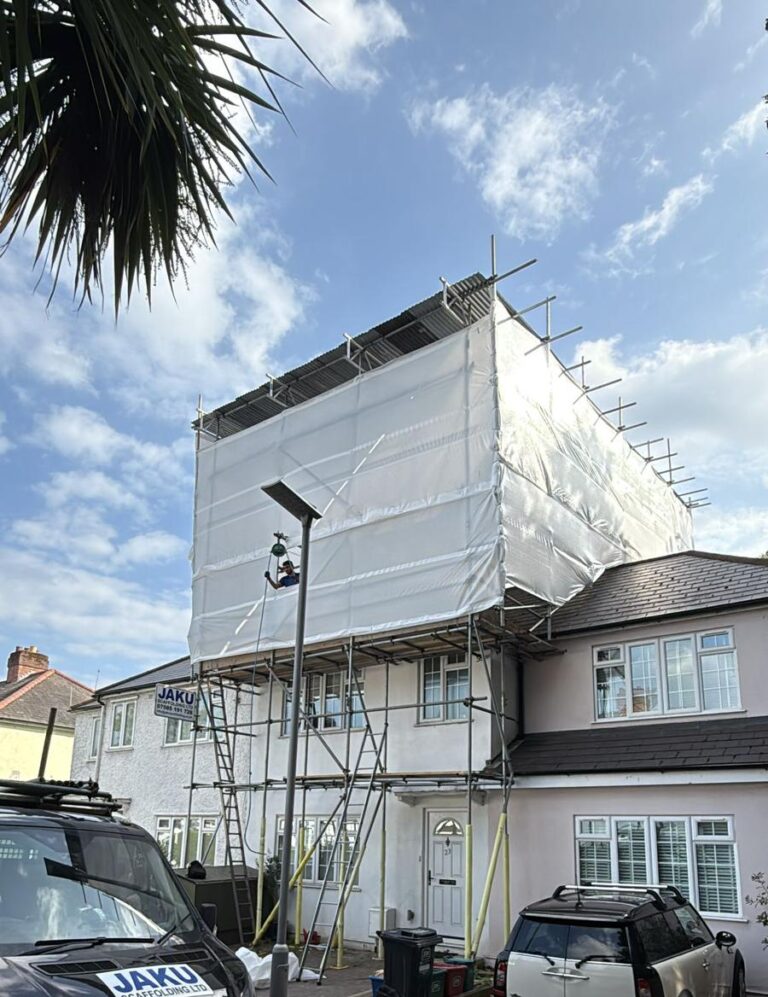Scaffolding London – Safety Standards You Need to Know
When searching for scaffolding in London, it’s important to choose a company that not only delivers reliable access solutions but also follows strict safety regulations. Scaffolding is the backbone of construction work at height, providing safe platforms for workers across residential, commercial, and industrial projects. From extensions and loft conversions to major city developments, scaffolding in London must comply with the highest standards to protect workers, the public, and surrounding property.
The diagram above highlights the essential elements of a scaffold system and the rules that guide safe assembly and use. Below, we explore the key safety standards every London project must follow.
Solid Foundations for London Scaffolding
Every scaffold must start with a secure base. Without strong foundations, even the most carefully built structure can fail.
- Sole Boards (Sills): Used on softer surfaces across London sites to distribute the weight of scaffold posts, preventing sinking or shifting. The minimum size is 765mm long, 225mm wide, and 38mm thick.
- Base Plates: Installed below each vertical post (standard) to provide a level and stable footing. A minimum size of 150mm x 150mm x 6mm is required.
In London’s varied terrain—whether a busy street in Westminster or a garden in Southwark—ensuring the scaffold is properly supported at ground level is critical.
The Scaffold Framework
The main structure of a scaffold is made up of vertical and horizontal components that create strength and stability.
- Standards (Vertical Posts): These upright tubes carry the full load. They must be plumb and firmly supported. Spacing depends on the duty of the scaffold:
- Light Duty: Up to 2.7m apart
- Medium Duty: Up to 1.8m apart
- Ledgers (Runners): Horizontal tubes that connect the standards along the scaffold’s length, maintaining alignment.
- Transoms (Bearers): Run across the scaffold at right angles to ledgers, supporting scaffold boards. They must extend at least 1.2m beyond standards for stability.
- Kicker Lift: The first level of the scaffold, built 150mm above the ground, ensuring strength from the base upwards.
This interconnected framework is what allows scaffolding in London to safely support workers and materials at height.
Safe Working Platforms
The working platform is where tradespeople carry out their tasks, so it must be designed with safety in mind.
- Scaffold Boards: Each board must be at least 38mm thick and 225mm wide. Boards must not be split by more than 300mm, warped, or damaged. Proper overlap and overhang are essential to prevent slipping.
- Guardrails (Toprail & Midrail): The toprail must sit between 0.95m–1.15m above the platform, while the midrail is installed halfway between the platform and toprail.
- Toe Boards: At least 100mm high and 25mm thick, toe boards prevent tools and materials from falling off platforms.
On busy London streets, falling debris is a major hazard. Correctly installed toe boards and guardrails provide protection for workers and the public below.
Bracing and Stability
Diagonal bracing strengthens the scaffold by preventing swaying or leaning under load. A scaffold in London may face heavy winds or constant pedestrian traffic around it, so bracing is crucial for long-term stability. Braces must be fixed across the full height and width of the structure, secured to posts or runner/ledger intersections.
Safe Access to Platforms
Workers must have safe, convenient access to every level of the scaffold:
- Ladders: Must be supported on both feet, extend at least 0.9m above the landing platform, and be secured at both sides.
- Angle: Ladders should be placed at a 75° angle (1 vertical to 4 horizontal).
- Drop Bars: Where openings exist, self-closing drop bars should be installed to maintain guardrail continuity.
On London projects, where multiple trades may be working simultaneously, controlled and secure access points help maintain order and reduce risks.
Load Limits and Duty Ratings
Scaffolds are designed to carry specific loads. Overloading a scaffold can result in structural failure, risking lives and property.
- Light Duty Scaffolding: Maximum 120kg/m²
- Medium Duty Scaffolding: Maximum 225kg/m²
It is essential that contractors in London adhere to these limits and avoid overloading platforms with excessive materials.
Why Safety Standards Matter in London
Scaffolding accidents can lead to serious injuries, costly project delays, and potential legal consequences. With the high volume of construction projects across London, from private homes to large-scale commercial sites, compliance with HSE (Health and Safety Executive) regulations is non-negotiable.
By following these scaffold safety standards, contractors ensure:
- Protection of workers at height
- Safety for pedestrians and nearby properties
- Compliance with UK safety legislation
- Reduced risk of delays and additional costs
Choosing the Right Scaffolding Company in London
When selecting a scaffolding contractor in London, it’s essential to work with a company that prioritises safety and compliance. At Jaku Scaffolding, we:
- Provide safe, fully compliant scaffold systems for projects of all sizes
- Supply detailed risk assessments and method statements (RAMS)
- Carry out regular inspections throughout every project
- Ensure all scaffolds comply with TG20:21 and SG4:22 standards
If you’re looking for reliable scaffolding in London, choosing a company that puts safety first makes all the difference. At Jaku Scaffolding, we combine years of experience with strict compliance, offering scaffolding solutions for residential, commercial, and industrial projects across all London boroughs. Contact us today for a free scaffolding quote in London.



